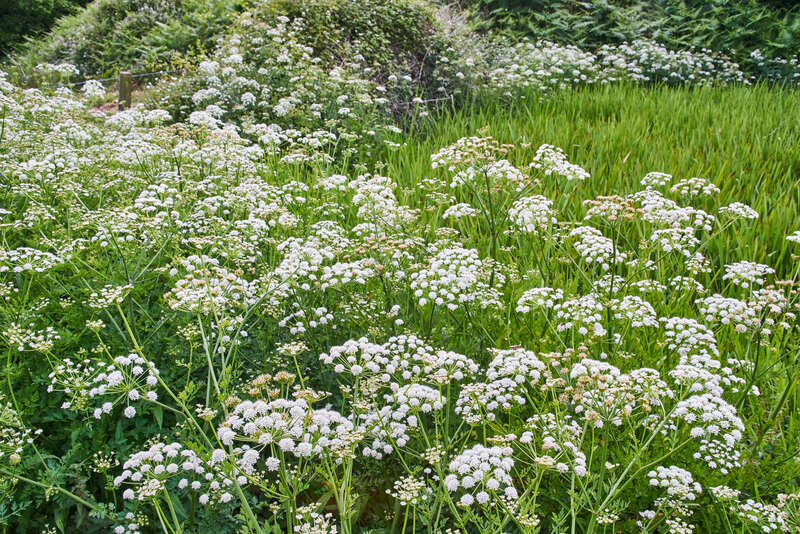Enhancing Urban Landscapes with Vertical Gardening
Posted on 27/09/2025
Enhancing Urban Landscapes with Vertical Gardening
Urban areas are expanding at a rapid pace, often at the expense of green spaces. As cities become more populated, the need for innovative solutions to maintain greenery and promote a healthier living environment arises. One such solution is vertical gardening. This technique provides a transformative approach to urban landscaping, enabling cities to integrate nature even in the most densely built environments. In this comprehensive guide, we'll explore how vertical gardens enhance urban landscapes, their benefits, designs, best plants, and future trends.
What is Vertical Gardening?
Vertical gardening, also referred to as living walls, green walls, or vertical plant installations, involves growing plants upwards on specially-designed structures rather than on traditional horizontal plots. From artistic green facades on skyscrapers to compact wall planters in apartments, this method maximizes usable space and introduces verdant elements where ground space is limited.
Key Concepts in Vertical Gardening
- Vertical structures: Frames or panels that support plant growth on walls and other upright surfaces.
- Hydroponic or soil-based systems: Approaches that use either soil or nutrient solutions to nourish the plants.
- Indoor and outdoor applications: Versatility makes vertical gardens suitable for both building exteriors and interiors.
- Plant selection: Choosing suitable vegetation based on light, water, and aesthetic needs.

The Role of Vertical Gardens in Urban Landscaping
Urban landscapes face unique challenges, including air pollution, heat islands, and restricted natural spaces. Integrating vertical garden designs into cityscapes allows for functional and visual enhancements that traditional landscaping simply cannot offer.
The Transformative Impact on City Spaces
- Maximizing space: Vertical gardening transforms unused walls, fences, and even balconies into lush oases, optimizing green presence in limited areas.
- Improving air quality: Plants filter airborne pollutants, provide oxygen, and contribute to a fresher urban atmosphere.
- Temperature regulation: Living walls help cool buildings and reduce heat island effects by providing insulation and shading.
- Noisewall mitigation: Dense plant walls dampen city noises, creating quieter indoor and outdoor environments.
- Aesthetic appeal: Stylish vertical installations beautify drab cityscapes and rejuvenate public spaces.
Benefits of Vertical Gardening in Urban Spaces
Vertical gardens are not just decorative; they offer tangible benefits to urban residents and the environment. Let's delve deeper into the many advantages of embracing vertical garden architecture in city settings.
1. Enhanced Urban Biodiversity
By incorporating vertical plant walls, cities can attract birds, bees, and beneficial insects, enriching local biodiversity. This is especially crucial where ground-level habitats are dwindling.
2. Increased Green Spaces without Land Scarcity
With urban populations soaring, land is a premium resource. Vertical gardening expands green coverage upward, providing lush foliage without taking up valuable real estate.
3. Improved Mental and Physical Well-Being
- Stress reduction: Studies indicate that contact with plants lowers stress and promotes relaxation.
- Air purification: Green walls combat toxins and improve indoor/outdoor air, benefiting respiratory health.
- Urban agriculture: Edible vertical gardens support community nutrition and engagement.
4. Energy Efficiency and Sustainability
Vertical gardens on buildings act as insulation, reducing heating and cooling costs. Sustainable urban gardening practices also support eco-friendly city planning.
5. Property Value and Economic Gains
Green landscapes are proven to increase property value, entice investors, and attract tourism. A city that embraces vertical gardening reaps both environmental and economic rewards.
Types of Vertical Gardens
From simple trellis-climbing plants to high-tech hydroponic living walls, vertical gardening caters to a variety of urban environments. Here are the most common types:
Trellis and Lattice Systems
- Ideal for creeping vines like ivy and jasmine.
- Low maintenance and suitable for residential patios or small urban plots.
Modular Green Walls
- Pre-planted panels attached to walls, allowing flexible design and plant variety.
- Often used in commercial and large residential developments.
Hydroponic Living Walls
- Soil-less systems using water-based nutrients, perfect for modern urban aesthetics.
- Feature automated irrigation and precision control for plant growth.
DIY Vertical Planters
- Upcycled containers, pocket planters, and hanging pots offer affordable green solutions for balconies and interiors.
- Encourage creativity and personalization in compact urban spaces.
Choosing the Best Plants for Vertical Gardening
Plant selection is crucial to vertical garden success. The optimal species will depend on location factors, such as sunlight exposure, indoor/outdoor placement, temperature, and desired maintenance level.
- Foliage plants: Ferns, philodendrons, pothos, and spider plants thrive in shade or indirect light and offer lush, cascading greenery.
- Flowering species: Begonias, petunias, and nasturtiums add vibrant color to living walls.
- Herbs and edibles: Basil, mint, lettuce, strawberries, and tomatoes provide both beauty and fresh produce for urban kitchens.
- Succulents: Ideal for low-maintenance, drought-tolerant vertical gardens.
- Native species: Selecting plants indigenous to your climate ensures resilience and supports local ecosystems.
Implementing Vertical Gardens: Practical Considerations
Before diving into vertical gardening projects, urban planners and homeowners should account for several practical aspects.
Site Assessment
- Evaluate wall structure strength and sun/shade exposure.
- Consider climate, wind, and surrounding environmental factors.
Water and Irrigation Needs
- Automated drip irrigation systems are recommended for large-scale urban vertical gardens.
- Regular watering is crucial for container and planter-based systems.
Soil and Nutrient Management
- Ensure proper drainage to prevent root rot.
- Use high-quality potting mix or hydroponic solutions for optimal plant health.
Maintenance and Upkeep
- Regular pruning, feeding, and pest monitoring keep living walls attractive and healthy.
- Seasonal plant rotation maintains year-round appeal.
Inspiring Urban Vertical Gardening Projects
Across the globe, vertical gardens are redefining urban landscapes. Here are some awe-inspiring examples and ideas:
- Musee du Quai Branly, Paris: A living wall by botanist Patrick Blanc, featuring over 15,000 plants spanning several stories.
- One Central Park, Sydney: This residential skyscraper features lush vertical gardens integrated into the facade, promoting sustainability and biodiversity.
- Edible schoolyards: Urban schools are using vertical gardens to teach students about food production, nutrition, and environmental responsibility.
- Public green corridors: City governments create vertical installations along walkways, highways, and public parks to connect isolated green spaces.
Cost Factors and Return on Investment (ROI)
Establishing a vertical garden requires upfront investment in materials, irrigation, and professional installation. However, the ROI is reflected in energy savings, increased property value, and enhanced urban resilience.
- Initial costs: Vary depending on garden scale, from inexpensive DIY projects to sophisticated commercial living walls.
- Long-term savings: Insulation from green walls reduces utility bills, and edible gardens cut household food expenses.
- Indirect benefits: Health improvements, increased rental and sale value, and communal pride in green urban neighborhoods.
Overcoming Challenges in Urban Vertical Gardening
While vertical gardening offers myriad benefits for city landscapes, there are certain challenges to address:
- Structural limitations: Not all buildings can support the weight of extensive green walls; professional assessment is essential.
- Maintenance demands: Plant health requires ongoing vigilance for watering, feeding, and pest control.
- Climate adaptability: Extreme weather can stress living walls unless appropriate plant species and technology are used.
- Initial costs: Some high-tech systems entail sizable upfront expenses, but their long-term value typically offsets this.
Innovative Solutions
Emerging technologies like self-watering systems, lightweight panels, and smart climate sensors are making vertical gardening in urban areas more practical and accessible. Integration with renewable energy sources further enhances sustainability.

The Future of Vertical Gardening in Urban Environments
As the world's urban population exceeds 4 billion, the concept of "greening the city" is reshaping architectural and landscape standards. Here's what the future looks like:
- Smart green infrastructure: Living walls will integrate with urban design, improving stormwater management, temperature moderation, and biodiversity.
- Edible cities: More rooftops and facades will feature vertical gardens producing fresh food locally, reducing food miles and promoting food security.
- Modular and mobile installations: Portable living walls will offer flexibility for events, public gatherings, and community projects.
- Artistic integration: Architects, artists, and designers are collaborating to turn city vertical spaces into living masterpieces.
Conclusion: Greening the Future with Vertical Gardening
Vertical gardening is revolutionizing how cities interact with nature. Through innovative design and commitment to sustainable urban landscaping, urban vertical gardens offer solutions to land scarcity, environmental challenges, and aesthetic needs. Whether applied on a large scale by municipalities or embraced by individual city dwellers, vertical gardens stand as beacons of hope--transforming concrete jungles into vibrant, healthy, and beautiful ecosystems.
Ready to enhance your urban landscape? Start small with a balcony herb wall, join a community green wall project, or advocate for living walls in city planning. Vertical gardening is not just a trend--it's a step towards a greener, healthier, and more resilient urban future.



